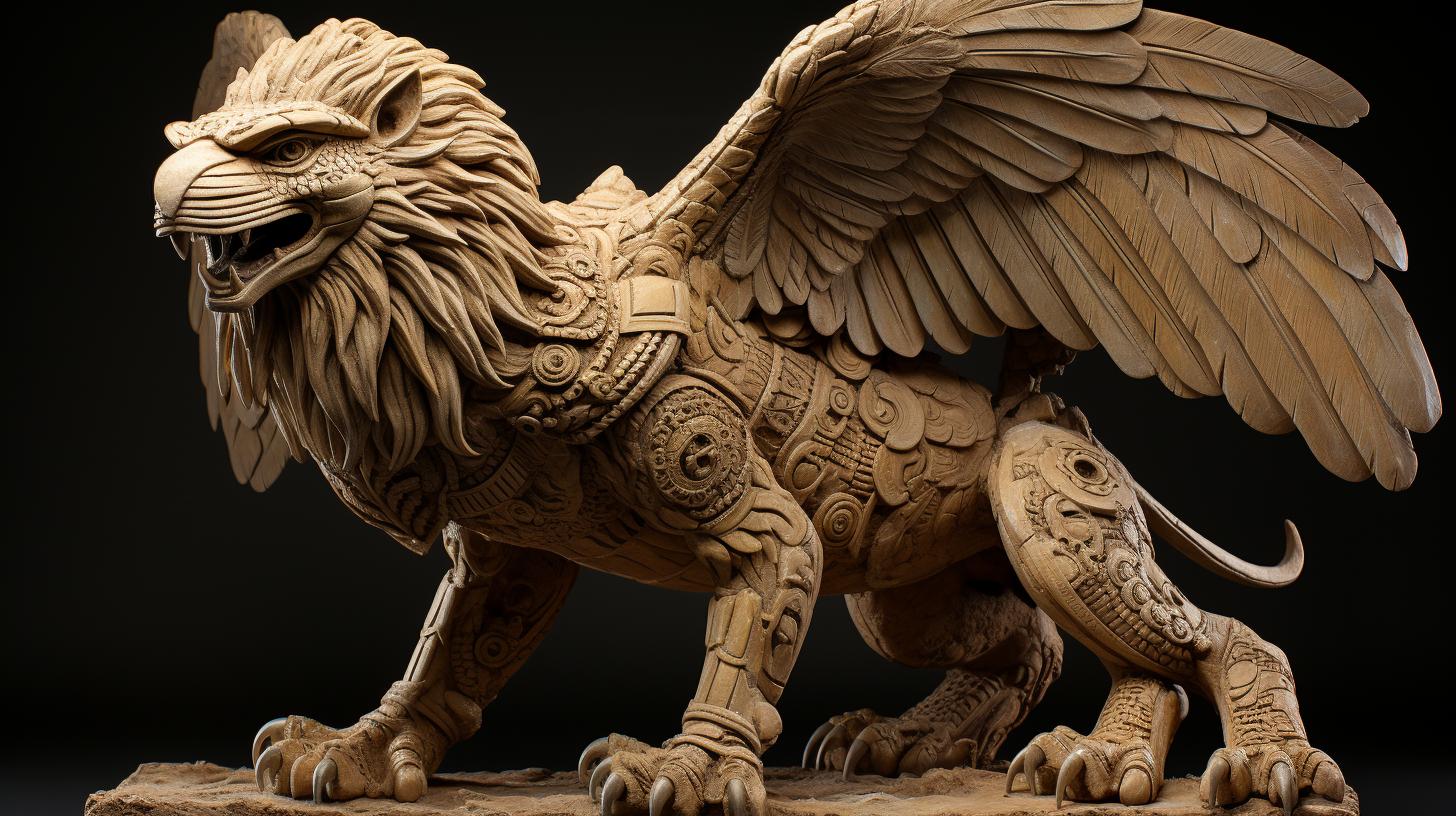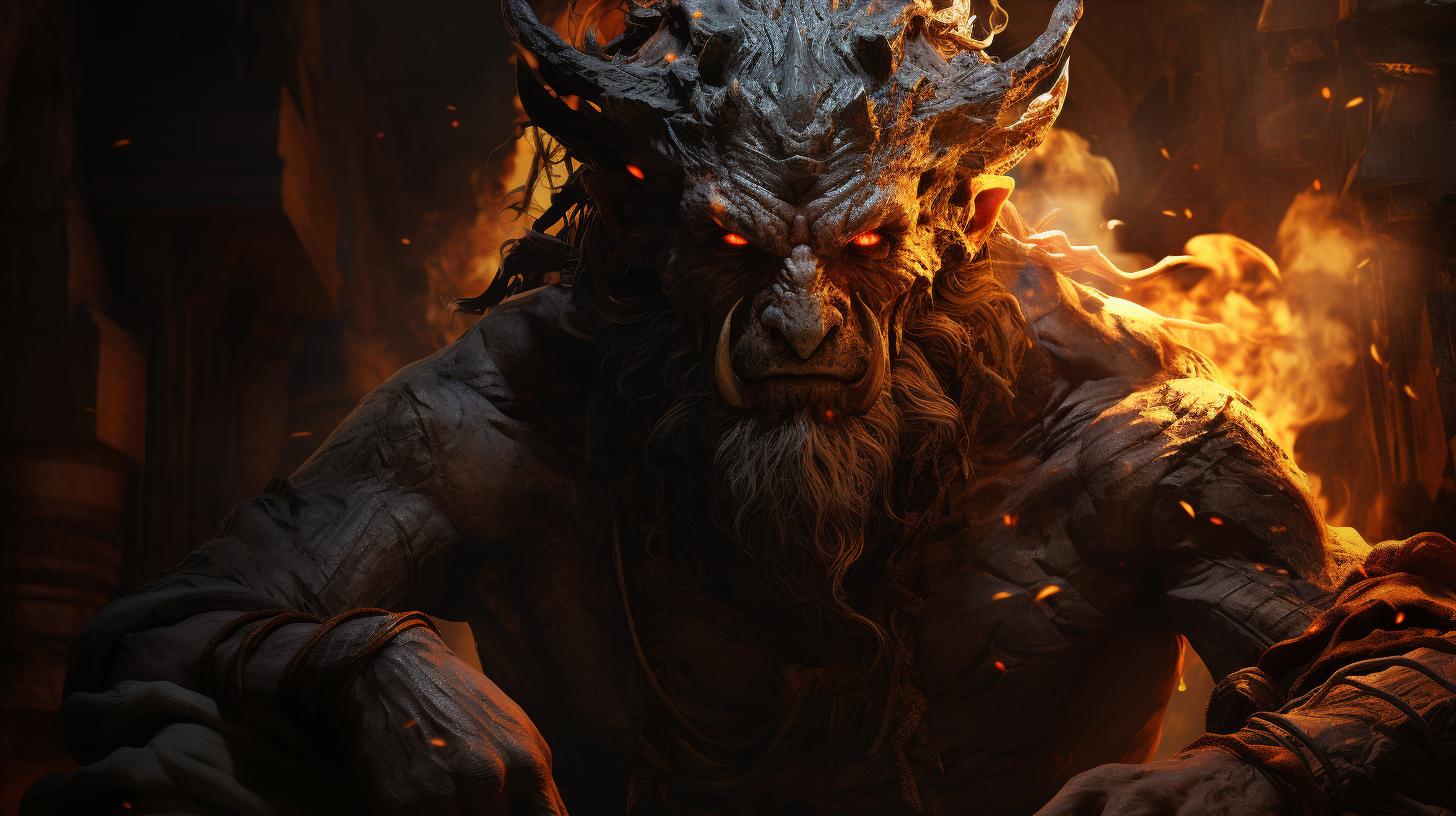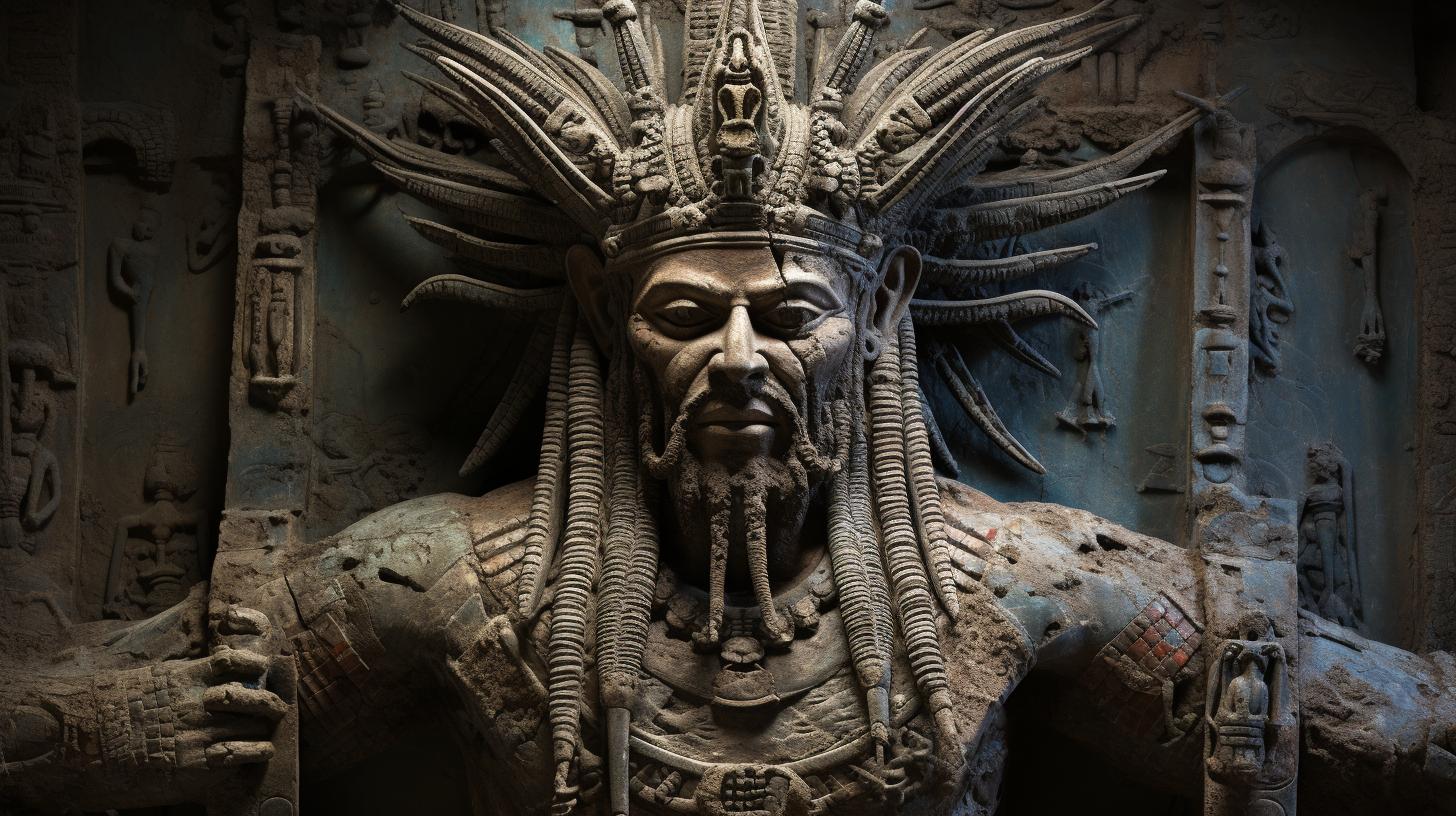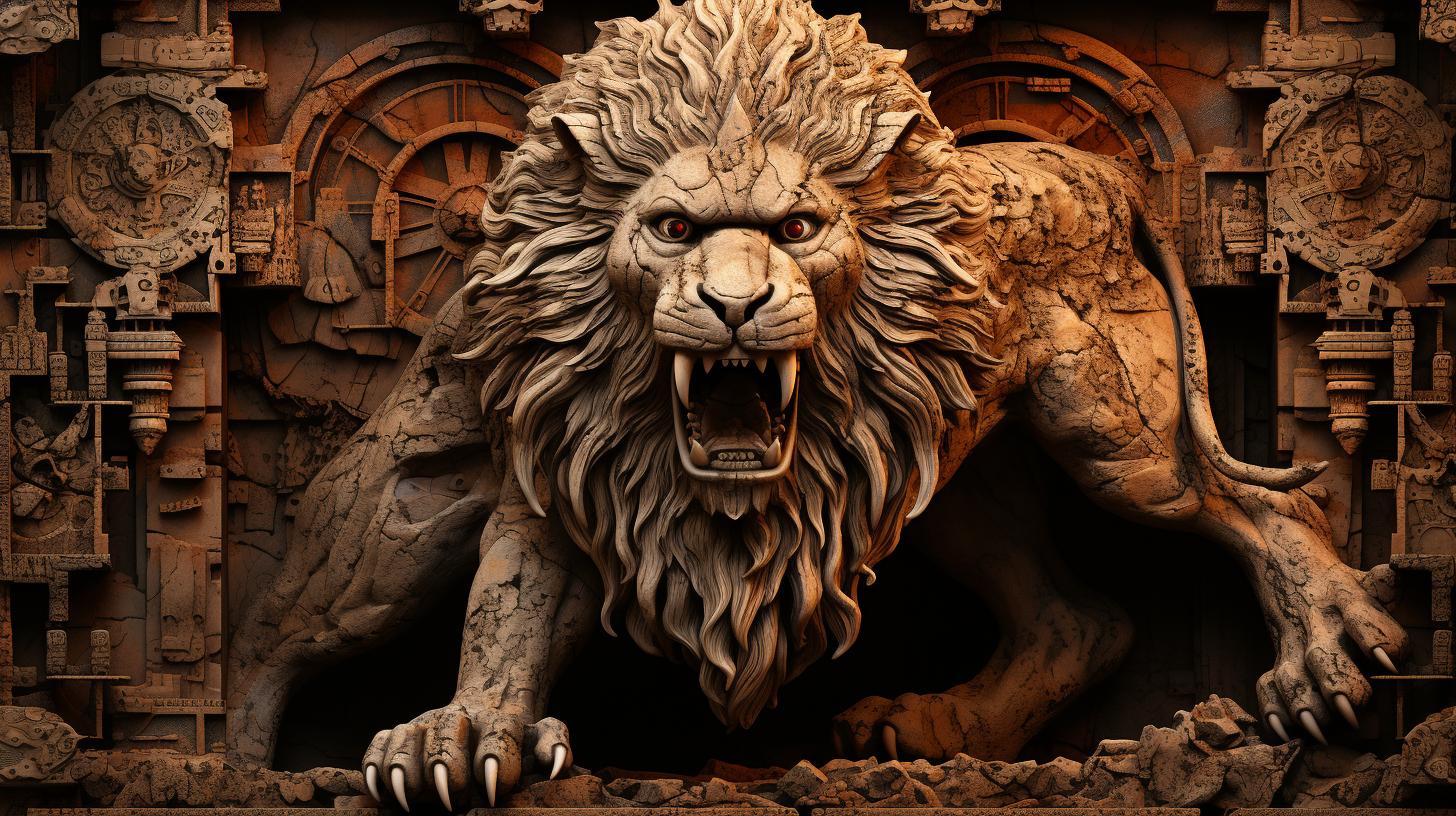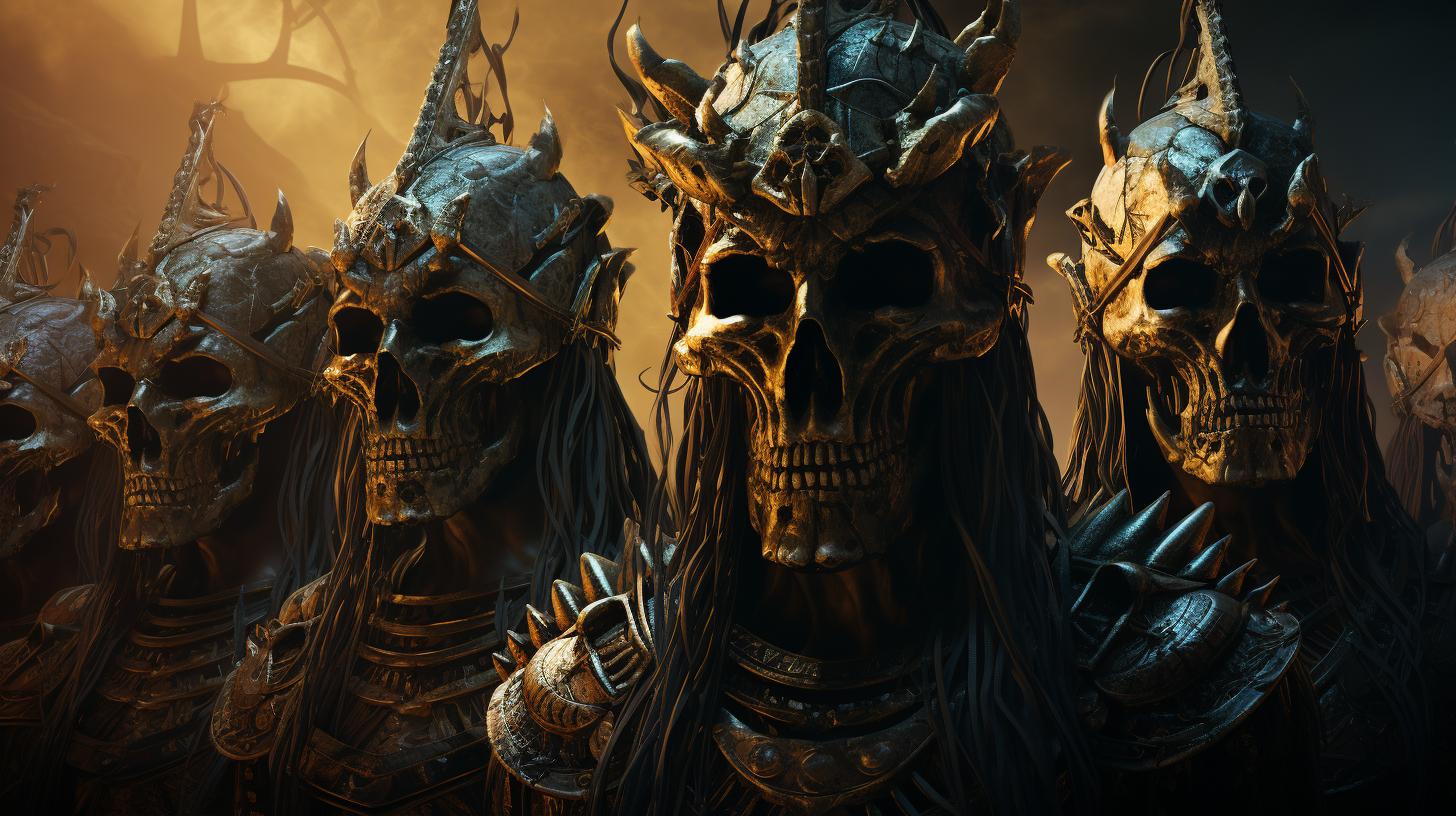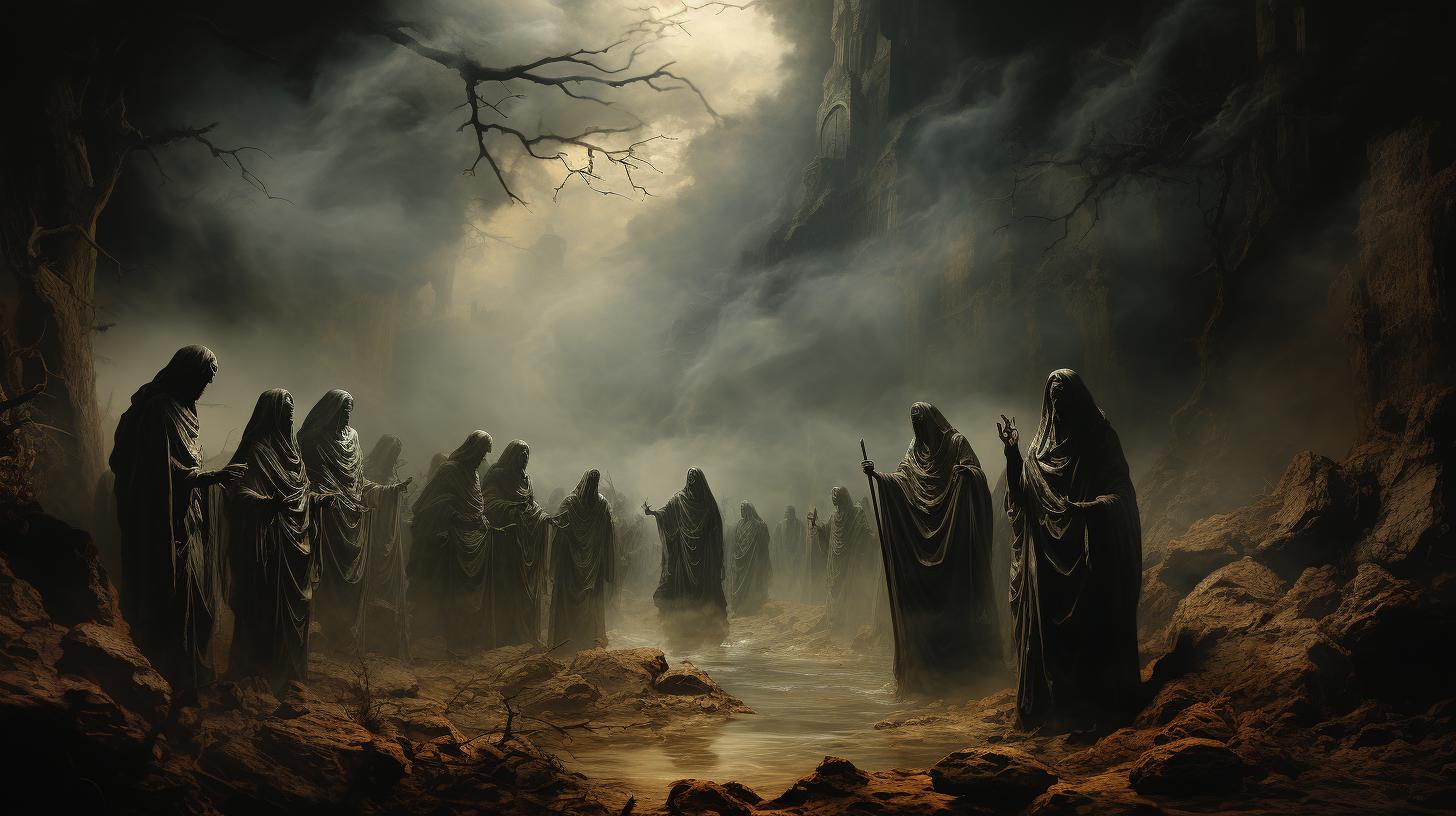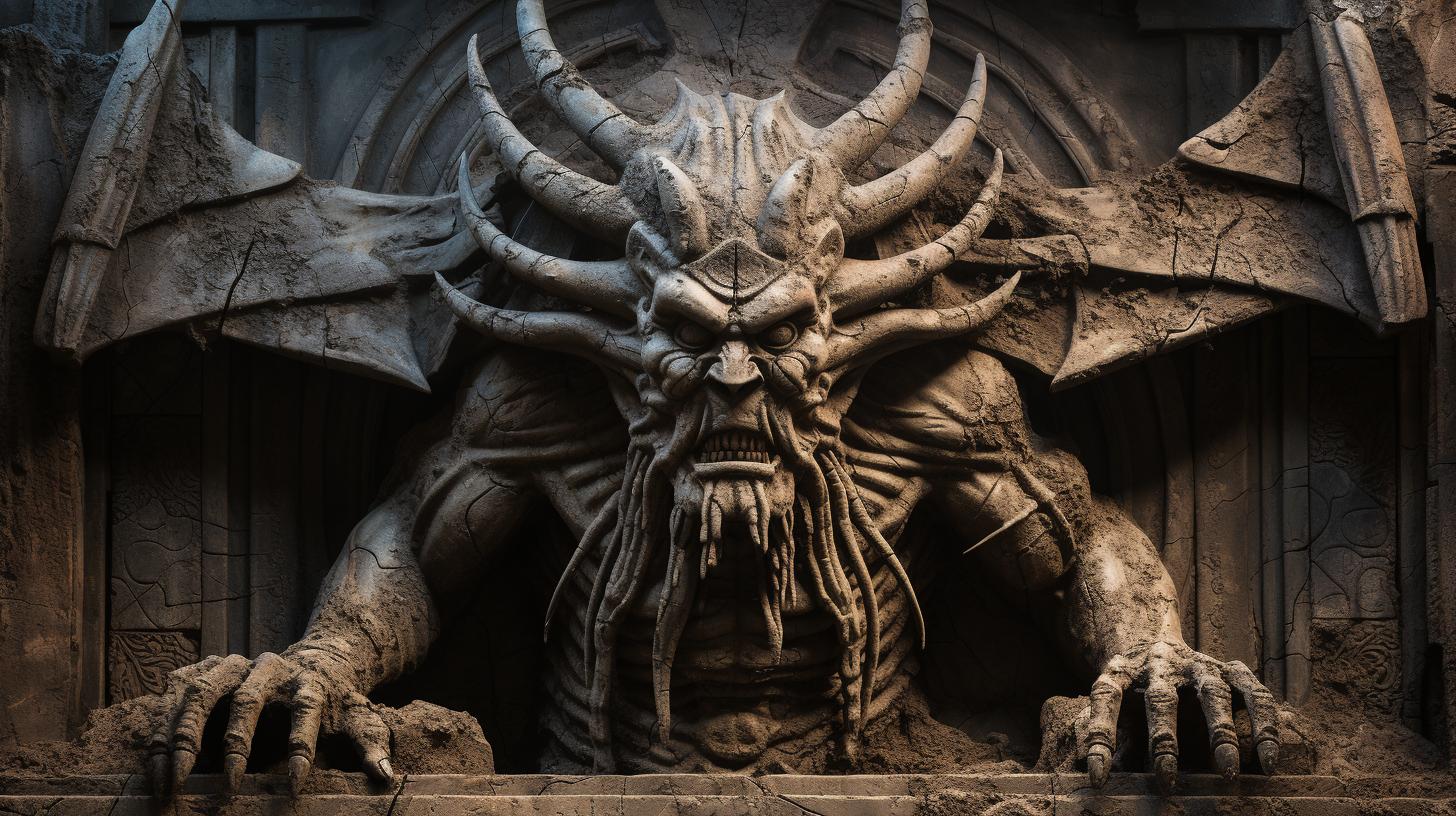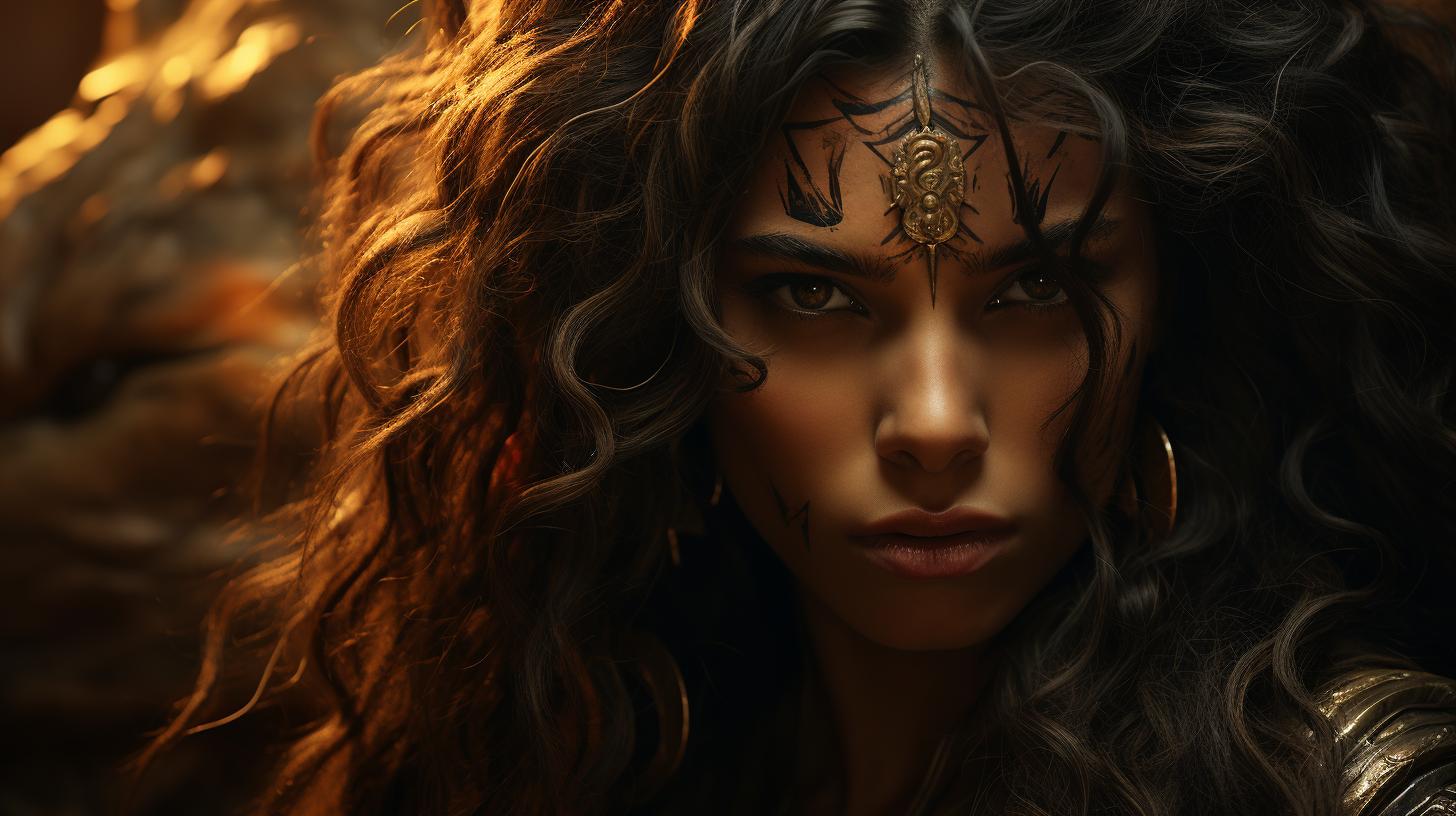Mushussu Dragon: Unveiling the Mystical Creature of Ancient Mesopotamia
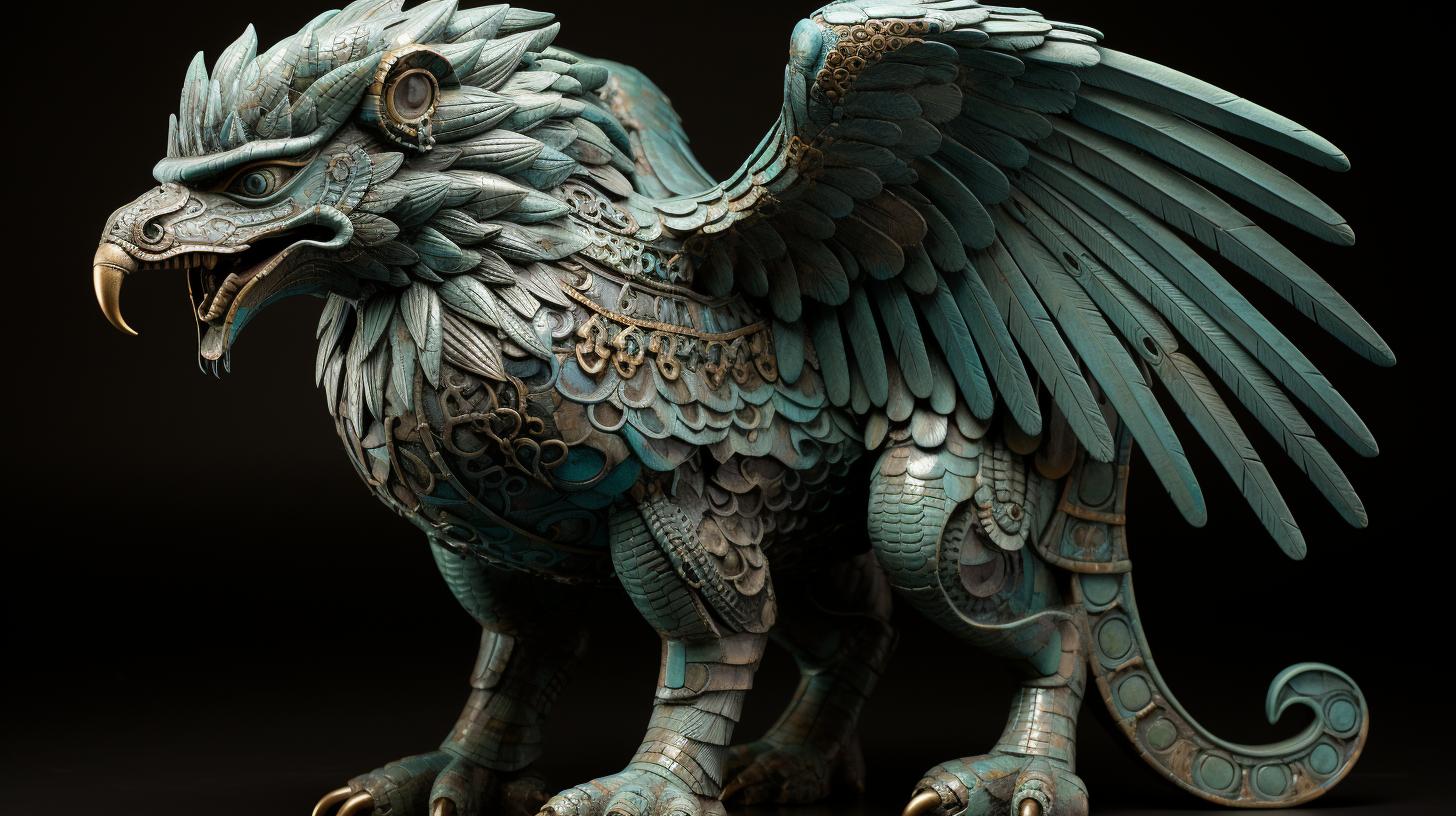
The Mushussu Dragon is an intriguing mythical creature from ancient Mesopotamia. Known for its unique hybrid features, including serpent-like head and neck, lion-like front legs, and bird-like hind legs, the Mushussu holds great significance in Mesopotamian mythology.
Often associated with the powerful deity Marduk, the Mushussu is believed to have played a crucial role in Babylonian art, rituals, and religious beliefs. This article delves into the origins, symbolism, artistic representations, and cultural importance of the enigmatic Mushussu Dragon in ancient Mesopotamian society and mythology.
Mushussu Dragon: Exploring the Ancient Mesopotamian Mythical Creature
The Mushussu Dragon, a legendary creature from ancient Mesopotamia, captivates with its enigmatic nature and fascinating characteristics. This section delves into the origins and distinctive features of this mythical being, shedding light on its mystical presence in Mesopotamian mythology.
Origins and Characteristics of the Mushussu Dragon
The Mushussu Dragon emerges from the depths of ancient Mesopotamian beliefs and legends. With its hybrid attributes, including a serpent-like head, a snake-like neck, lion-like front legs, and bird-like hind legs, the creature stands as an embodiment of diverse entities in Mesopotamian cosmology.
These unique features come together to create a truly remarkable and awe-inspiring mythical creature.
The Significance of Mushussu in Mesopotamian Mythology
In Mesopotamian mythology, the Mushussu Dragon holds profound symbolism and importance. It is intertwined with the intricate fabric of religious beliefs, serving as a powerful emblem associated with divine figures and celestial realms.
Through various tales and legends, the Mushussu Dragon represents guardianship, strength, and the celestial forces that shaped the ancient Mesopotamian world.
Depictions of Mushussu in Art and Literature
The artistic representations of the Mushussu Dragon provide a glimpse into the rich cultural heritage of ancient Mesopotamia. From intricate carvings on stone panels to detailed illustrations in literature, the depictions of this mythical creature showcase the creativity and reverence bestowed upon it.
These artistic renderings not only inspire awe but also offer valuable insights into the role and significance of the Mushussu Dragon in the ancient Mesopotamian society.
The Powerful Connection: Marduk and the Mushussu Dragon
Exploring the deep connection between Marduk, the prominent deity of ancient Mesopotamia, and the magnificent Mushussu Dragon reveals a fascinating intertwining of mythical significance.
Let’s delve into the role of the Mushussu as a symbol of Marduk, Marduk’s association with the Mushussu in Babylonian art and ritual texts, and the mythical bonds that exist between Marduk, Mushussu, and the Anunnaki.
The Role of Mushussu as a Symbol of Marduk
The Mushussu Dragon held a significant role as a symbol of Marduk, representing his power, authority, and protection. Depicting the Mushussu alongside Marduk emphasized the deity’s association with the forces of good and divine kingship.
The creature’s hybrid features embodied the unique qualities of Marduk and showcased his divine attributes.
Marduk’s Association with Mushussu in Babylonian Art and Ritual Texts
Babylonian art and ritual texts vividly depicted the strong association between Marduk and the Mushussu Dragon. Paintings, sculptures, and inscriptions on temples and palaces showcased their connection, portraying Marduk in close proximity to the Mushussu.
These representations aimed to extol Marduk’s greatness and highlight the protective nature of the Mushussu as it stood alongside the deity.
Unraveling the Mythical Bonds: Marduk, Mushussu, and Anunnaki
The mythical bonds between Marduk, the Mushussu Dragon, and the Anunnaki unveil a complex interplay of divine relationships and hierarchical structures in Mesopotamian mythology.
As one of the prominent deities within the Anunnaki pantheon, Marduk’s connection with the Mushussu, as both a symbol and a divine creature, further solidifies his position as a powerful force within the mythical realm.
Understanding these interconnections sheds light on the multi-faceted layers of Mesopotamian belief systems and cosmology.
Exploring the Iconic Representation: Mushussu Dragon in Babylonian Art
The Mushussu Dragon holds a significant place in Babylonian art, with its presence being particularly notable in various artistic depictions. This section delves into the exploration of the iconic representation of the Mushussu Dragon in Babylonian art, shedding light on its symbolism and its role within the Babylonian empire.
The Famous Ishtar Gate and Mushussu Dragon
One of the most famous representations of the Mushussu Dragon can be found on the Ishtar Gate, which was the eighth gate to the inner city of Babylon. This monumental gate, constructed during the reign of King Nebuchadnezzar II, was adorned with vibrant blue glazed bricks and featured exquisite depictions of mythical creatures, including the Mushussu Dragon.
Positioned at the forefront of the gate, the Mushussu Dragon guarded the city and symbolized protection against evil forces.
Analyzing the Artistic Depictions of Mushussu in Babylonian Art
Within Babylonian art, the Mushussu Dragon is represented in various forms and styles, reflecting its diverse symbolism. Artistic depictions often showcase the dragon with its distinct hybrid features, such as the serpent-like head, lion-like front legs, and bird-like hind legs.
These representations highlight the skill and craftsmanship of Babylonian artists in capturing the complexity and mythical nature of the Mushussu Dragon.
Visual Symbolism: Mushussu Dragon’s Role in Babylonian Empire
The presence of the Mushussu Dragon in Babylonian art carries deep symbolism within the empire. Its portrayal as a powerful and awe-inspiring creature served to emphasize the might and authority of Babylonian kings and the gods they represented.
The depiction of the Mushussu Dragon communicated a sense of protection and divine favor, reinforcing the empire’s strength and legitimizing its rule.
Mystical Legends and Cultural Significance: Mushussu Dragon in Mesopotamian Society
Mushussu’s Role as a Protective Spirit in Mesopotamian Mythology
In the ancient Mesopotamian mythology, the Mushussu Dragon held a significant role as a protective spirit.
Believed to possess supernatural powers, the Mushussu was revered as a guardian and defender against evil forces. It was considered a symbol of strength and divine protection, with the ability to ward off malevolent entities and bring blessings to the people.
Mushussu Dragon’s Impact on Mesopotamian Rituals and Beliefs
The Mushussu Dragon’s presence extended beyond the realm of mythology and into the religious and ritualistic practices of ancient Mesopotamia. Associated with the divine forces and revered deities, rituals involving the Mushussu were performed to seek divine favor, protection, and to ensure the prosperity of the community.
These rituals often incorporated offerings and prayers to honor and invoke the powers of the Mushussu.
Mushussu Dragon’s Legacy: Influences on Ancient Mesopotamian Literature and Religion
The enigmatic Mushussu Dragon left a lasting impact on ancient Mesopotamian literature and religion. Its awe-inspiring and mystical characteristics captured the imagination of poets, storytellers, and scholars, leading to its prominent inclusion in various mythological texts and religious narratives.
The legendary tales surrounding the Mushussu Dragon continue to fascinate and inspire discussions on ancient Mesopotamian culture and beliefs.
Unveiling the Enigma: Understanding the Story Behind the Mushussu Dragon
The Mythological Hybrid: Descriptions and Interpretations
The Mushussu Dragon is a captivating creature from ancient Mesopotamian mythology that embodies a unique combination of characteristics. With its serpent-like head and neck, lion-like front legs, and bird-like hind legs, the Mushussu is a mesmerizing hybrid that sparks curiosity and imagination.
Exploring the various depictions and interpretations of this mythical creature not only deepens our understanding of its physical attributes but also offers insights into the cultural and symbolic significance it held in ancient Mesopotamian society.
Unearthing Mushussu’s Symbolism in Sumerian and Babylonian Texts
Delving into Sumerian and Babylonian texts, we uncover the rich symbolism associated with the Mushussu Dragon. Found in mythological narratives, poems, and religious texts, these ancient writings provide clues about the creature’s role and importance in the ancient Mesopotamian belief system.
As we analyze the texts, we unveil the connections between the Mushussu and various deities, royal figures, and cosmological concepts, shedding light on its multifaceted symbolism in the ancient world.
Exploring the Significance of Mushussu in Ancient Mesopotamian Mythology
Beyond its physical appearance, the Mushussu Dragon occupies a significant place in ancient Mesopotamian mythology.
Through examining its presence in creation myths, epic narratives, and religious rituals, we gain a deeper understanding of its mythological significance. As we navigate the mesmerizing tales and rituals involving the Mushussu, we uncover its role as a symbol of power, protection, and divine authority.
The exploration of its significance in ancient Mesopotamian mythology allows us to appreciate the complex layers of meaning and cultural values attached to this enigmatic creature.
- The Mythological Hybrid: Descriptions and Interpretations
- Unearthing Mushussu’s Symbolism in Sumerian and Babylonian Texts
- Exploring the Significance of Mushussu in Ancient Mesopotamian Mythology
.

